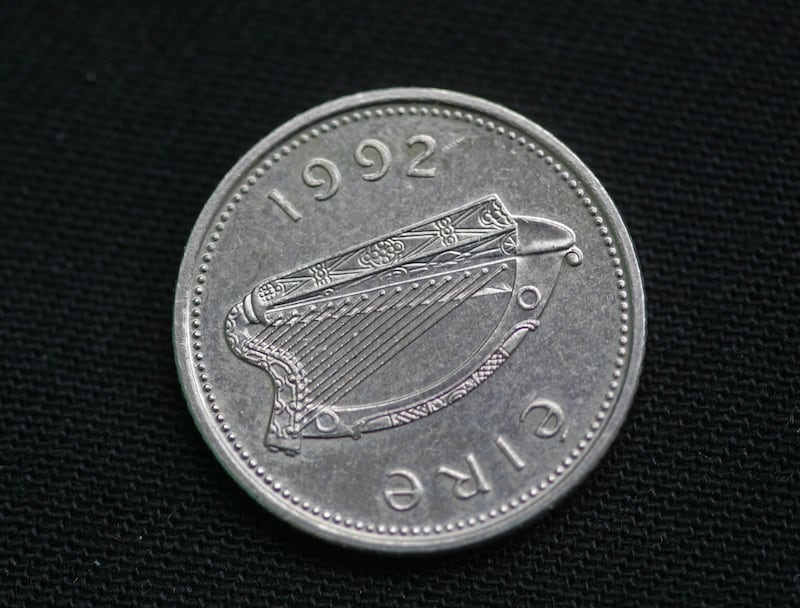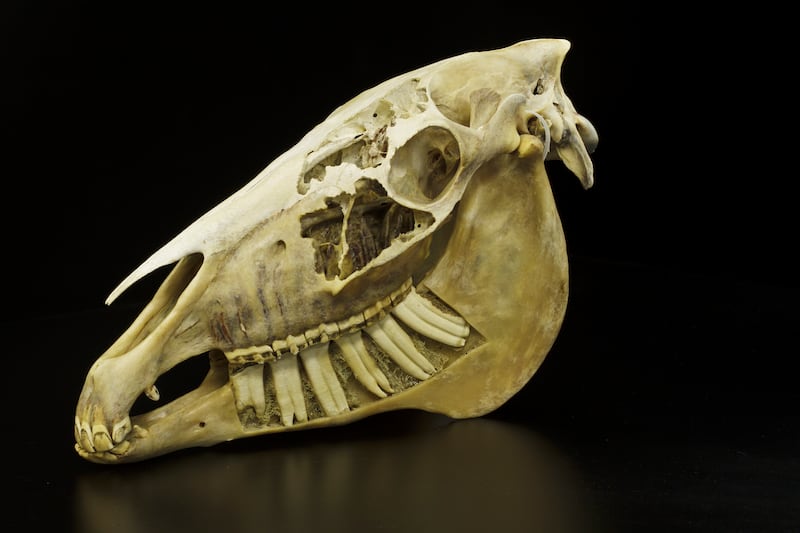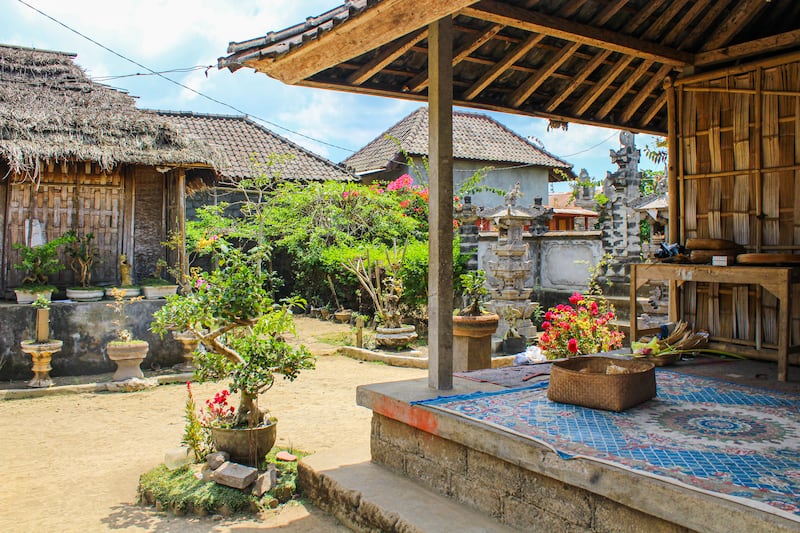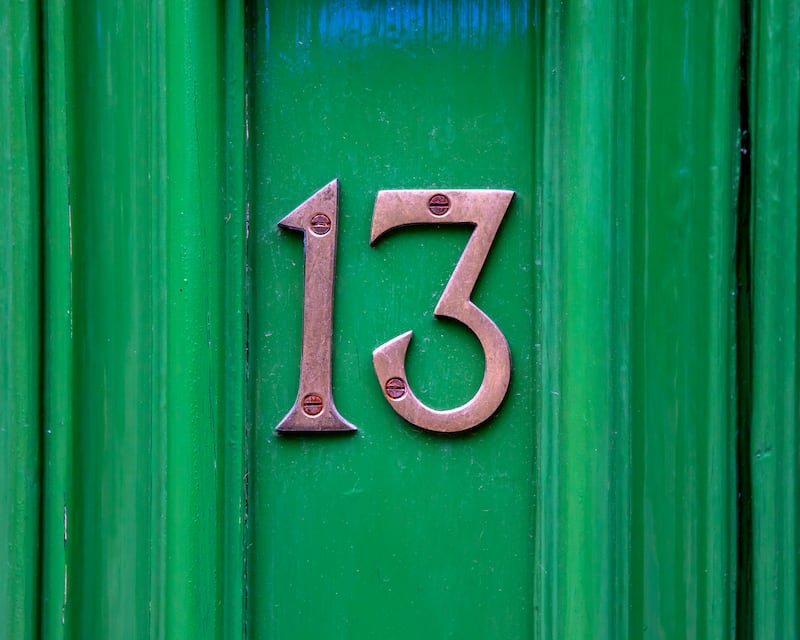I once met a woman in Greece who said that a wise idea, when building a house, is to bury a jar of honey at the deepest, lowest part, so that you will always have sweetness in the home. This came back to me recently as I embarked on a build, and now, under the just-poured floors, a small jar of Brookfield Farm honey nestles. Will it bring sweetness? I don’t know for sure, but I like the idea that it’s there.
Another Greek custom is to smash a pomegranate at the threshold once you are (almost) ready to move in, but presumably before the white carpets go down. Abundance will flow as the seeds scatter. I imagine that it would be well worth clearing up thoroughly, or else ants and mice may also flow along a similar trajectory.
Build a house in some parts of the world and before you even think of seeking planning permission, it is recommended to first seek permission from the spirits. In China, Feng Shui will suggest the ideal location and orientation for each room, and sometimes advise that you don’t build in certain spots at all. House-building wisdoms and superstitions range from the beautiful to the somewhat stomach churning, so if you are about to build – whether it’s a full on house or simply a small extension, choose wisely and well.
Customs and traditions give insights into the concerns of our ancestors, and range from battling inclement weather to religious belief to supernatural anxieties. Many echo around the world, although there are also strong regional variations within countries, and burying things in the foundations is a common thread. Coins feature widely, offering the promise of wealth. In Ireland, it was said that the coin should have the same date as the year the house was built. Other items recovered from foundations of Irish houses have included holy pictures, containers of holy water, prayers, horseshoes and whiskey.
READ MORE

Known as apotropaic magic, sometimes buried items aren’t there to stimulate sweetness and wealth but to provide protection, and the Irish habit of interring good luck talismans gets a little dark with another custom: burying horse skulls under floors, especially under the flagstone at the hearth of the fire. Cats and chickens have also been discovered, and in some cases they would have been buried alive, which echoes other old traditions, such as the Turkish one of a sheep sacrifice in the foundations. Cats had better luck in Ukraine, where a live feline would be sent into the new house ahead of any humans, to keep the spirits happy.
[ Ireland’s darkest, oddest and weirdest secrets uncoveredOpens in new window ]
A kinder Irish tradition is detailed, among many other fascinating finds, as part of the fascinating Dúchas Project, which has been digitising the National Folklore Collection. The collection itself is housed at UCD, and features more than two million manuscript pages. It includes stories gathered from primary schools in the 1930s where pupils interviewed older people about their superstitions and beliefs.

In 1938, 14-year-old Treasa Wall noted: “When a man would be building a new house long ago he would get a sheaf of straw and set it on fire and keep it in his two hands while he’d walk round the plot of the house […] Where the burnt sheaf fell that was the place to dig the first sod.” She also added that they were careful “not to build on a path the fairies might want to use,” and “Monday and Friday are unlucky days to go into a new house”.
Builders will often sign their work or leave notes behind door frames or under timbers, where they won’t be seen, as do future occupiers. Everything from prayers to passionate declarations of love can be found if you know where to look. These can also create colourful historical threads. On the US website finehomebuilding.com, one poster recalled: “I was hanging rock with my brother and brother-in-law in San Francisco in 1983 and uncovered, on the old plaster, ‘March 17, 1932. This depression going on for 2 years now. Roosevelt is President – good guy! Murphy and Sons extended lights to dining and livingroom.’ So we added May 23, 1983. Reagan is President – elitist, insensitive idiot. […] And sealed the wall back up for another 50 years.”
Sometimes superstitions arise from practicalities. In the north eastern United States, you will see “witch windows” where stepped rooflines meet. These tilted windows were said to prevent witches flying in – witches clearly being keener on symmetry – but another theory says they were designed to enable coffins to be carried out of upper stories, or more prosaically still, simply to let in more light.
Staying in the states and moving further south, Haint paint on the ceilings, and often on door and window frames of porches, comes from a Gullah tradition that says the pale shade of blue-green mimics either the sky or the sea. In both cases it stops ghosts from getting in – either by confusing them to fly up into the sky, or because they cannot cross water. These days many people think the colour also puts off bugs and other creepy crawlies, although, as with the ghost factor, this has yet to be scientifically proven.
A lovely custom comes from Scandinavia, where builders would celebrate finishing the house by hanging a twig or branch at the chimney top or apex, to thank the forest for the wood. This is said to have extended around the world and influenced “topping out” ceremonies, whether in timber, brick or stone, marking reaching the highest point of a building.
In Bali, traditional houses are often in family compounds, which reflect the human, natural and spirit worlds. The design is incredibly detailed – right down to the locations of a shrine at the “body’s” centre, and the rubbish tip where the human backside would be. As the family grows, and grows up, they move around the pavilions, from the children’s quarters to adult rooms to the structure closest to the family temple, where their soul will find home after death. Exploring this idea, I find it so much more poetic than our own mode of graduating from a small room with bunk beds, to the glories of an en suite, before winding up in the granny flat.

Another Indonesian custom relates to boat building. As the archipelago includes more than 17,000 islands, boats represent home to many, and a small hole would be bored into the keel of the traditional Pinisi for a small amount of gold to be dropped inside.
[ The Riabhach days: folklore, footwear and engaging with landscapeOpens in new window ]
Numbers matter too. Stairs are measured in threes in the Philippines, counting through “oro, plata, mata”, meaning: gold, silver, death; which boils down to the proposition that as you don’t want to end on a step of death, make sure you don’t have a staircase that is divisible by three. Speaking of numbers, many developers shy away from including a number 13, and you frequently don’t find 13th floors in hotel and apartment buildings, especially in America. Chinese builders also avoid the number 4.

Once you have built your house, there is a whole other world of moving in superstitions, including bringing gifts of salt, bread and wine, and moving in on a rainy day in Iceland, and NOT moving in on a rainy day in Ireland, but that’s a whole other story.
See duchas.ie for more from the National Folklore Collection, which is searchable under headings from candle making to butter churning, folk medicine to animal lore and more.













